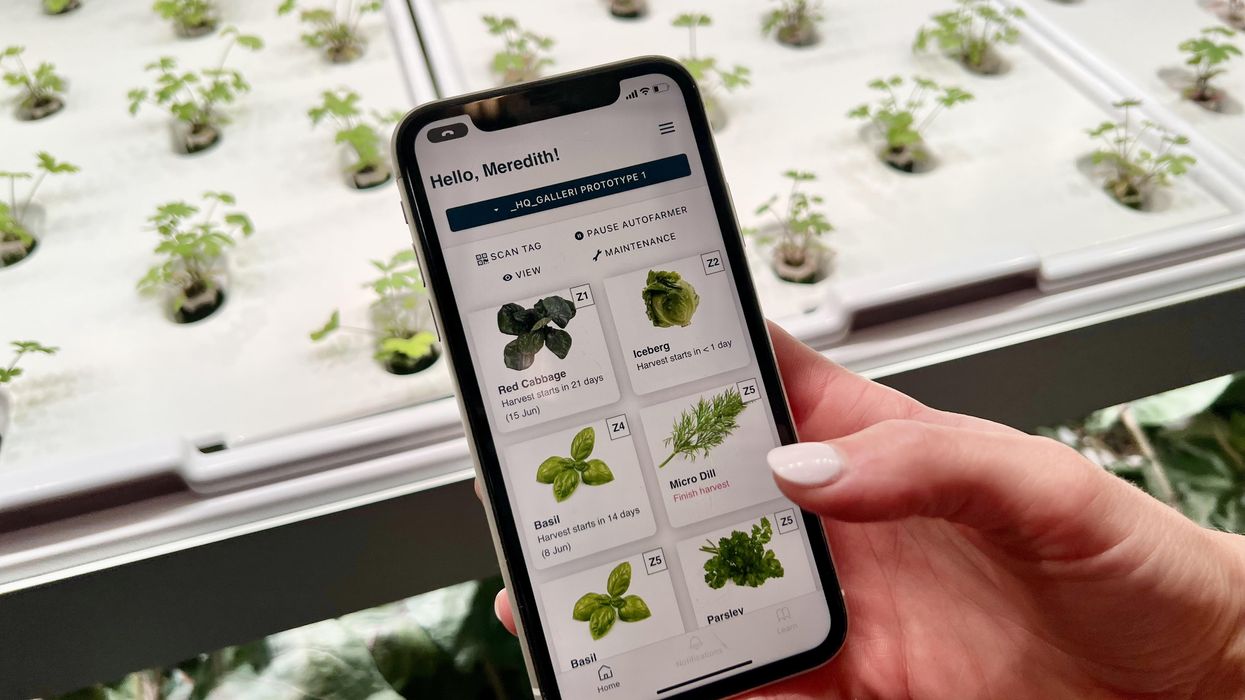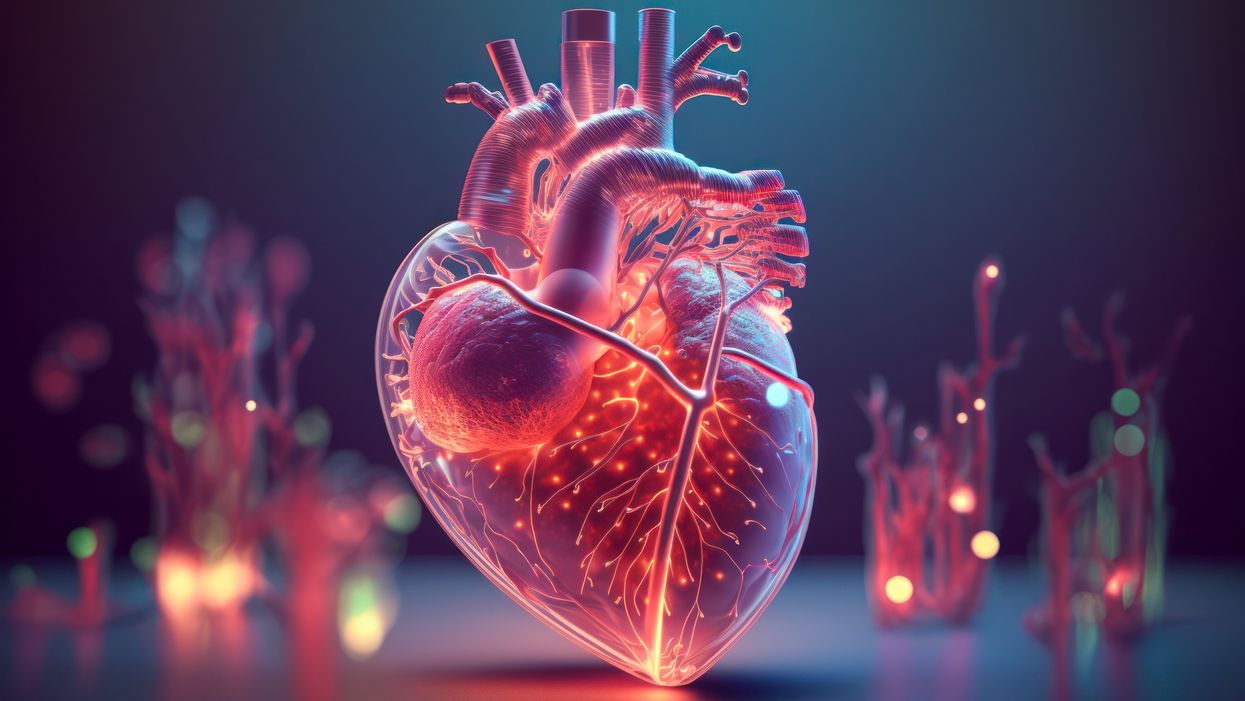Diagnosed by App: Medical Testing in the Palm of Your Hand
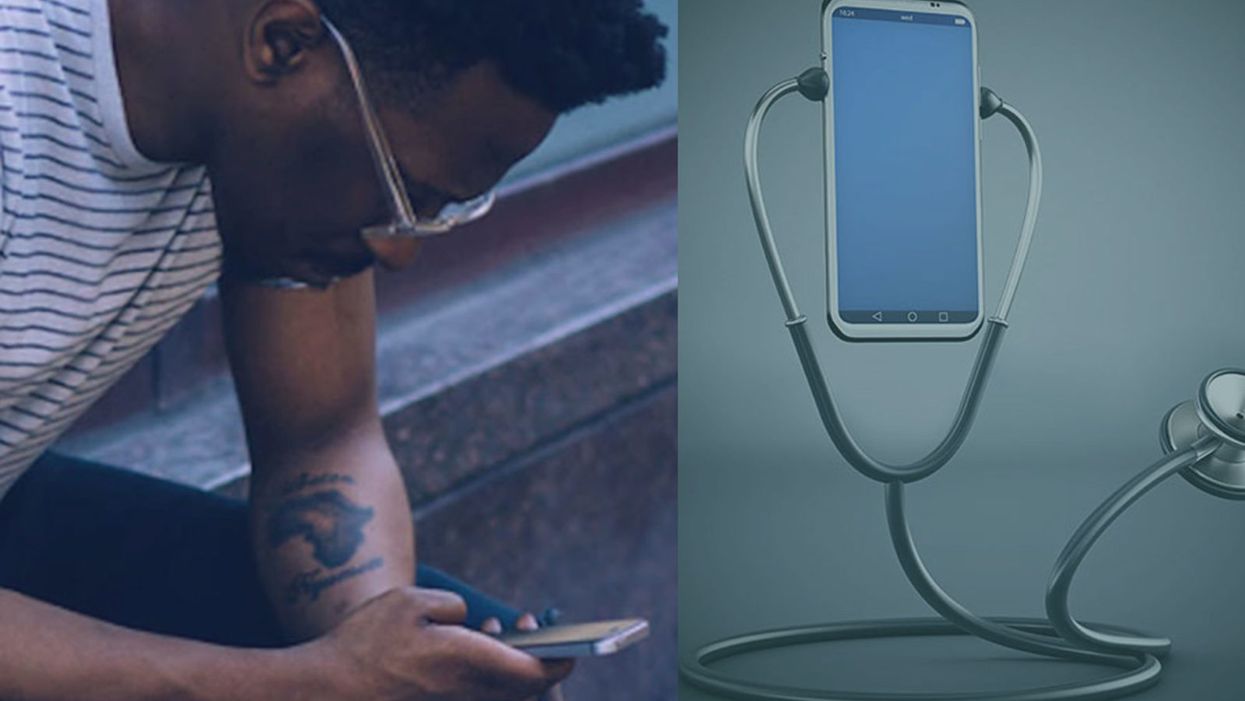
The shift to in-home medical testing through smartphone apps is expected to save patients time in receiving certain kinds of diagnoses, but raises some privacy concerns.
Urinary tract infections aren't life-threatening, but they can be excruciatingly painful and debilitating.
"Overnight, I'd be gripped by this searing pain and I can barely walk," says Ling Koh, a Los Angeles-based bioengineer. But short of going to the ER or urgent care, she'd have to suffer for a few days until she could get in to see her family doctor for an antibiotic prescription.
Smartphones are now able to do on-the-spot diagnostic tests that were previously only able to be performed in a lab.
No longer. Koh, who works for Scanwell Health, was instrumental in the development of the company's smartphone app that is FDA-cleared for urinary tract infection screening. It allows someone to test urine at home using a paper test strip — the same one used by doctors in ERs and labs. The phone app reads a scan card from the test kit that can analyze what's on the strip and then connect the patient to a physician who can make a virtual diagnosis.
Test strips cost $15 for a three-pack and consultation with a doc is about the same as an average co-pay -- $25, and the app matches the quality of clinical laboratory tests, according to the company. Right now, you can get a referral to a telehealth visit with a doctor in California and get a prescription. A national rollout is in the works within the next couple of months.
"It's so easy to use them at home and eliminate the inefficiencies in the process," says Koh. "A telemedicine doctor can look at the test results and prescribe directly to the pharmacy instead of women waiting at home, miserable, and crying in the bathtub."
Scanwell is now involved in an ongoing National Institutes of Health- sponsored study of chronic kidney disease to test a version of the app to identify patients who have the disease, which affects more than 30 million Americans. "Because kidney disease has virtually no symptoms, by the time people realize they're sick, their illness is advanced and they're ready for dialysis," says Koh. "If we can catch it sooner, early intervention can help them avoid kidney failure."
Smartphones have changed society — and now they may change medical care, too. Thanks to the incredible processing capabilities of our smartphones, which come equipped with a camera, access to the internet and are thousands of times faster than the 1960s era NASA computers that ran the Apollo Moon Mission, these pocket-sized powerhouses have become an invaluable tool for managing our health and are even able to do on-the-spot diagnostic tests that were previously only able to be performed in a lab.
This shift to in-home testing is the wave of the future, promising to ease some of the medical care bottlenecks in which patients can have two- to three-week waits to see their family doctors and lift some of the burdens on overworked physicians.
"This is really the democratization of medicine because a lot of the things we used to rely on doctors, hospitals, or labs to do we'll be able to do ourselves," says Dr. Eric Topol, an eminent cardiologist and digital health pioneer at the Scripps Clinic and Research Institute in La Jolla.
But troubling questions remain. Aside from the obvious convenience, are these tests truly as accurate as ones in a doctor's office? And with all this medical information stored and collected by smartphones, will privacy be sacrificed? Will friends, family members, and employers suddenly have access to personal medical information we'd rather keep to ourselves?
The range of what these DIY health care apps can do is mind-boggling, and even more complex tests are on the way.
"I'm really worried about that because we've let our guard down," says Topol. "Data stored on servers is a target for cyber thieves — and data is being breached, hacked, brokered, and sold, and we're complacent."
Still, the apps have come a long way since 2011 when Topol whipped out an experimental smartphone electro-cardiogram that he had been testing on his patients when a fellow passenger on a flight from Washington D.C. was seized with severe chest pains. At 35,000 feet in the air, the app, which uses fingertip sensors to detect heart rate, showed the man was having a heart attack. After an emergency landing, the passenger was rushed to the closest hospital and survived. These days, even the Apple Watch has an FDA-approved app that can monitor your electro-cardiogram readings.
The range of what these DIY health care apps can do is mind-boggling, and even more complex tests are on the way. Phone apps can now monitor sleep quality to detect sleep apnea, blood pressure, weight and temperature. In the future, rapid diagnostic tests for infectious diseases, like flu, Dengue or Zika, and urinalysis will become common.
"There is virtually no limit to the kinds of testing that can be done using a smartphone," says Dr. John Halamka, Executive Director of the Health Technology Exploration Center at Beth Israel Lahey Health. "No one wants to drive to a clinician's office or lab if that same quality testing can be achieved at a lower cost without leaving home."
SkinVision's skin cancer screening tool, for instance, can tell if a suspicious mole is cancerous. Users take three photos, which are then run through the app's algorithm that compares their lesions with more than three million pictures, evaluating such elements as asymmetry, color, and shape, and spits out an assessment within thirty seconds. A team of in-house experts provide a review regardless of whether the mole is high or low risk, and the app encourages users to see their doctors. The Dutch-based company's app has been used by more than a million people globally in the EU, and in New Zealand and Australia, where skin cancer is rampant and early detection can save lives. The company has plans to enter the U.S. market, according to a spokesperson.
Apps like Instant Heart Rate analyze blood flow, which can indicate whether your heart is functioning normally, while uChek examines urine samples for up to 10 markers for conditions like diabetes and urinary tract infections. Some behavioral apps even have sensors that can spot suicide risks if users are less active, indicating they may be suffering from a bout of the blues.
Even more complex tests are in the research pipeline. Apps like ResAppDX could eventually replace x-rays, CT scans, and blood tests in diagnosing severe respiratory infections in kids, while an EU-funded project called i-Prognosis can track a variety of clues — voice changes, facial expressions, hand steadiness — that indicate the onset of Parkinson's disease.
These hand-held testing devices can be especially helpful in developing countries, and there are pilot programs to use smartphone technology to diagnose malaria and HIV infections in remote outposts in Africa.
"In a lot of these places, there's no infrastructure but everyone has a smartphone," says Scanwell's Koh. "We need to leverage the smartphone in a clinically relevant way."
However, patient privacy is an ongoing concern. A 2019 review in the Journal of the American Medical Association conducted by Australian and American researchers looked at three dozen behavioral health apps, mainly for depression and smoking cessation. They found that about 70 percent shared data with third parties, like Facebook and Google, but only one third of them disclosed this in a privacy policy.
"Patients just blindly accept the end user agreements without understanding the implications."
Users need to be vigilant, too. "Patients just blindly accept the end user agreements without understanding the implications," says Hamalka, who is also the Chief Information Officer and Dean for Technology at Harvard Medical School.
And quality control is an issue. Right now, the diagnostic tools currently available have been vetted by the FDA, and overseas companies like Skin Vision have been scrutinized by the U.K.'s National Health Service and the EU. But the danger is that a lot of apps are going to be popping up soon that haven't been properly tested, due to loopholes in the regulations.
"All we want," says Topol, "are rigorous studies to make sure what consumers are using is validated."
[Correction, August 19th, 2019: An earlier version of this story misstated the specifics of SkinVision's service. A team of in-house experts reviews users' submissions, not in-house dermatologists, and the service is not free.]
Autonomous, indoor farming gives a boost to crops
Artificial Intelligence is already helping to grow some of the food we eat.
The glass-encased cabinet looks like a display meant to hold reasonably priced watches, or drugstore beauty creams shipped from France. But instead of this stagnant merchandise, each of its five shelves is overgrown with leaves — moss-soft pea sprouts, spikes of Lolla rosa lettuces, pale bok choy, dark kale, purple basil or red-veined sorrel or green wisps of dill. The glass structure isn’t a cabinet, but rather a “micro farm.”
The gadget is on display at the Richmond, Virginia headquarters of Babylon Micro-Farms, a company that aims to make indoor farming in the U.S. more accessible and sustainable. Babylon’s soilless hydroponic growing system, which feeds plants via nutrient-enriched water, allows chefs on cruise ships, cafeterias and elsewhere to provide home-grown produce to patrons, just seconds after it’s harvested. Currently, there are over 200 functioning systems, either sold or leased to customers, and more of them are on the way.
The chef-farmers choose from among 45 types of herb and leafy-greens seeds, plop them into grow trays, and a few weeks later they pick and serve. While success is predicated on at least a small amount of these humans’ care, the systems are autonomously surveilled round-the-clock from Babylon’s base of operations. And artificial intelligence is helping to run the show.
Babylon piloted the use of specialized cameras that take pictures in different spectrums to gather some less-obvious visual data about plants’ wellbeing and alert people if something seems off.
Imagine consistently perfect greens and tomatoes and strawberries, grown hyper-locally, using less water, without chemicals or environmental contaminants. This is the hefty promise of controlled environment agriculture (CEA) — basically, indoor farms that can be hydroponic, aeroponic (plant roots are suspended and fed through misting), or aquaponic (where fish play a role in fertilizing vegetables). But whether they grow 4,160 leafy-green servings per year, like one Babylon farm, or millions of servings, like some of the large, centralized facilities starting to supply supermarkets across the U.S., they seek to minimize failure as much as possible.
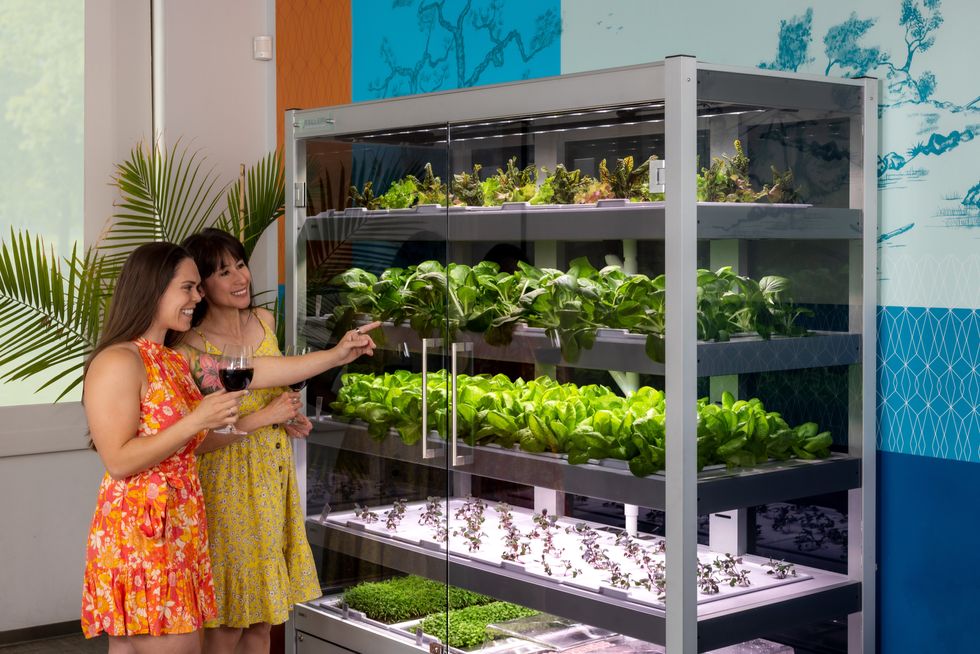
Babylon’s soilless hydroponic growing system
Courtesy Babylon Micro-Farms
Here, AI is starting to play a pivotal role. CEA growers use it to help “make sense of what’s happening” to the plants in their care, says Scott Lowman, vice president of applied research at the Institute for Advanced Learning and Research (IALR) in Virginia, a state that’s investing heavily in CEA companies. And although these companies say they’re not aiming for a future with zero human employees, AI is certainly poised to take a lot of human farming intervention out of the equation — for better and worse.
Most of these companies are compiling their own data sets to identify anything that might block the success of their systems. Babylon had already integrated sensor data into its farms to measure heat and humidity, the nutrient content of water, and the amount of light plants receive. Last year, they got a National Science Foundation grant that allowed them to pilot the use of specialized cameras that take pictures in different spectrums to gather some less-obvious visual data about plants’ wellbeing and alert people if something seems off. “Will this plant be healthy tomorrow? Are there things…that the human eye can't see that the plant starts expressing?” says Amandeep Ratte, the company’s head of data science. “If our system can say, Hey, this plant is unhealthy, we can reach out to [users] preemptively about what they’re doing wrong, or is there a disease at the farm?” Ratte says. The earlier the better, to avoid crop failures.
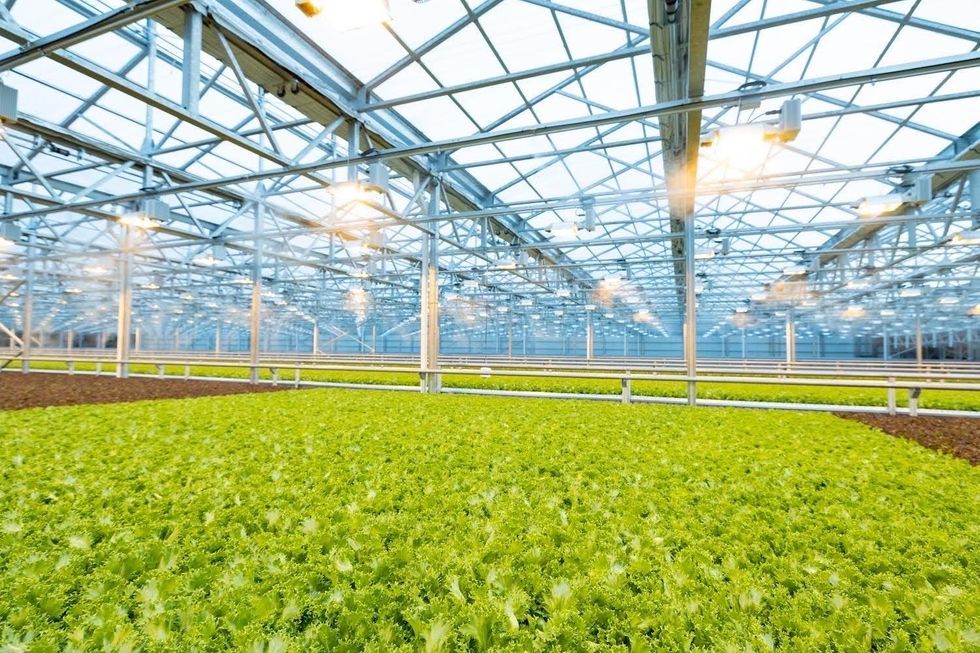
Natural light accounts for 70 percent of Greenswell Growers’ energy use on a sunny day.
Courtesy Greenswell Growers
IALR’s Lowman says that other CEA companies are developing their AI systems to account for the different crops they grow — lettuces come in all shapes and sizes, after all, and each has different growing needs than, for example, tomatoes. The ways they run their operations differs also. Babylon is unusual in its decentralized structure. But centralized growing systems with one main location have variabilities, too. AeroFarms, which recently declared bankruptcy but will continue to run its 140,000-square foot vertical operation in Danville, Virginia, is entirely enclosed and reliant on the intense violet glow of grow lights to produce microgreens.
Different companies have different data needs. What data is essential to AeroFarms isn’t quite the same as for Greenswell Growers located in Goochland County, Virginia. Raising four kinds of lettuce in a 77,000-square-foot automated hydroponic greenhouse, the vagaries of naturally available light, which accounts for 70 percent of Greenswell’s energy use on a sunny day, affect operations. Their tech needs to account for “outside weather impacts,” says president Carl Gupton. “What adjustments do we have to make inside of the greenhouse to offset what's going on outside environmentally, to give that plant optimal conditions? When it's 85 percent humidity outside, the system needs to do X, Y and Z to get the conditions that we want inside.”
AI will help identify diseases, as well as when a plant is thirsty or overly hydrated, when it needs more or less calcium, phosphorous, nitrogen.
Nevertheless, every CEA system has the same core needs — consistent yield of high quality crops to keep up year-round supply to customers. Additionally, “Everybody’s got the same set of problems,” Gupton says. Pests may come into a facility with seeds. A disease called pythium, one of the most common in CEA, can damage plant roots. “Then you have root disease pressures that can also come internally — a change in [growing] substrate can change the way the plant performs,” Gupton says.
AI will help identify diseases, as well as when a plant is thirsty or overly hydrated, when it needs more or less calcium, phosphorous, nitrogen. So, while companies amass their own hyper-specific data sets, Lowman foresees a time within the next decade “when there will be some type of [open-source] database that has the most common types of plant stress identified” that growers will be able to tap into. Such databases will “create a community and move the science forward,” says Lowman.
In fact, IALR is working on assembling images for just such a database now. On so-called “smart tables” inside an Institute lab, a team is growing greens and subjects them to various stressors. Then, they’re administering treatments while taking images of every plant every 15 minutes, says Lowman. Some experiments generate 80,000 images; the challenge lies in analyzing and annotating the vast trove of them, marking each one to reflect outcome—for example increasing the phosphate delivery and the plant’s response to it. Eventually, they’ll be fed into AI systems to help them learn.
For all the enthusiasm surrounding this technology, it’s not without downsides. Training just one AI system can emit over 250,000 pounds of carbon dioxide, according to MIT Technology Review. AI could also be used “to enhance environmental benefit for CEA and optimize [its] energy consumption,” says Rozita Dara, a computer science professor at the University of Guelph in Canada, specializing in AI and data governance, “but we first need to collect data to measure [it].”
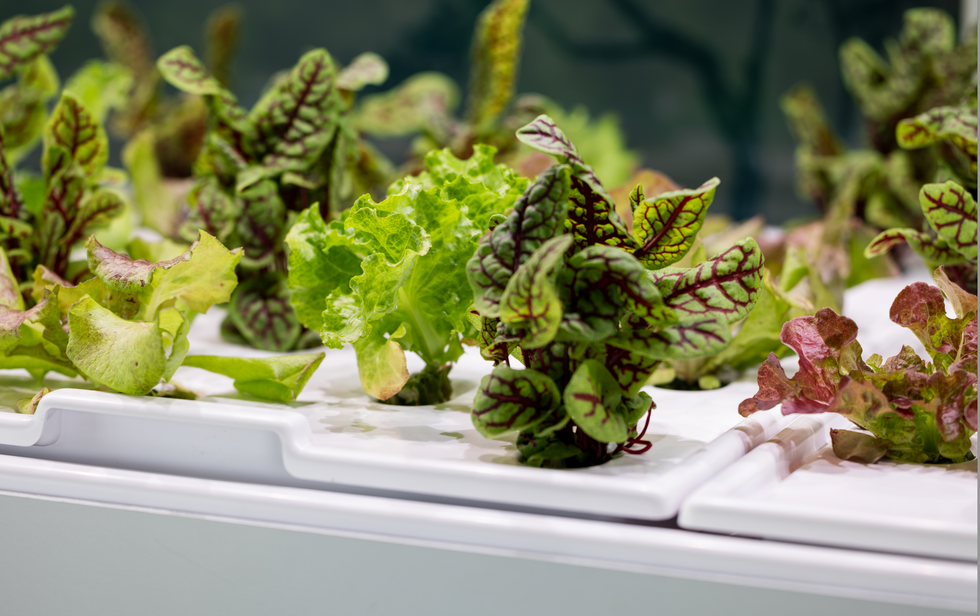
The chef-farmers can choose from 45 types of herb and leafy-greens seeds.
Courtesy Babylon Micro-Farms
Any system connected to the Internet of Things is also vulnerable to hacking; if CEA grows to the point where “there are many of these similar farms, and you're depending on feeding a population based on those, it would be quite scary,” Dara says. And there are privacy concerns, too, in systems where imaging is happening constantly. It’s partly for this reason, says Babylon’s Ratte, that the company’s in-farm cameras all “face down into the trays, so the only thing [visible] is pictures of plants.”
Tweaks to improve AI for CEA are happening all the time. Greenswell made its first harvest in 2022 and now has annual data points they can use to start making more intelligent choices about how to feed, water, and supply light to plants, says Gupton. Ratte says he’s confident Babylon’s system can already “get our customers reliable harvests. But in terms of how far we have to go, it's a different problem,” he says. For example, if AI could detect whether the farm is mostly empty—meaning the farm’s user hasn’t planted a new crop of greens—it can alert Babylon to check “what's going on with engagement with this user?” Ratte says. “Do they need more training? Did the main person responsible for the farm quit?”
Lowman says more automation is coming, offering greater ability for systems to identify problems and mitigate them on the spot. “We still have to develop datasets that are specific, so you can have a very clear control plan, [because] artificial intelligence is only as smart as what we tell it, and in plant science, there's so much variation,” he says. He believes AI’s next level will be “looking at those first early days of plant growth: when the seed germinates, how fast it germinates, what it looks like when it germinates.” Imaging all that and pairing it with AI, “can be a really powerful tool, for sure.”
Scientists make progress with growing organs for transplants
Researchers from the University of Cambridge have laid the foundations for growing synthetic embryos that could develop a beating heart, gut and brain.
Story by Big Think
For over a century, scientists have dreamed of growing human organs sans humans. This technology could put an end to the scarcity of organs for transplants. But that’s just the tip of the iceberg. The capability to grow fully functional organs would revolutionize research. For example, scientists could observe mysterious biological processes, such as how human cells and organs develop a disease and respond (or fail to respond) to medication without involving human subjects.
Recently, a team of researchers from the University of Cambridge has laid the foundations not just for growing functional organs but functional synthetic embryos capable of developing a beating heart, gut, and brain. Their report was published in Nature.
The organoid revolution
In 1981, scientists discovered how to keep stem cells alive. This was a significant breakthrough, as stem cells have notoriously rigorous demands. Nevertheless, stem cells remained a relatively niche research area, mainly because scientists didn’t know how to convince the cells to turn into other cells.
Then, in 1987, scientists embedded isolated stem cells in a gelatinous protein mixture called Matrigel, which simulated the three-dimensional environment of animal tissue. The cells thrived, but they also did something remarkable: they created breast tissue capable of producing milk proteins. This was the first organoid — a clump of cells that behave and function like a real organ. The organoid revolution had begun, and it all started with a boob in Jello.
For the next 20 years, it was rare to find a scientist who identified as an “organoid researcher,” but there were many “stem cell researchers” who wanted to figure out how to turn stem cells into other cells. Eventually, they discovered the signals (called growth factors) that stem cells require to differentiate into other types of cells.
For a human embryo (and its organs) to develop successfully, there needs to be a “dialogue” between these three types of stem cells.
By the end of the 2000s, researchers began combining stem cells, Matrigel, and the newly characterized growth factors to create dozens of organoids, from liver organoids capable of producing the bile salts necessary for digesting fat to brain organoids with components that resemble eyes, the spinal cord, and arguably, the beginnings of sentience.
Synthetic embryos
Organoids possess an intrinsic flaw: they are organ-like. They share some characteristics with real organs, making them powerful tools for research. However, no one has found a way to create an organoid with all the characteristics and functions of a real organ. But Magdalena Żernicka-Goetz, a developmental biologist, might have set the foundation for that discovery.
Żernicka-Goetz hypothesized that organoids fail to develop into fully functional organs because organs develop as a collective. Organoid research often uses embryonic stem cells, which are the cells from which the developing organism is created. However, there are two other types of stem cells in an early embryo: stem cells that become the placenta and those that become the yolk sac (where the embryo grows and gets its nutrients in early development). For a human embryo (and its organs) to develop successfully, there needs to be a “dialogue” between these three types of stem cells. In other words, Żernicka-Goetz suspected the best way to grow a functional organoid was to produce a synthetic embryoid.
As described in the aforementioned Nature paper, Żernicka-Goetz and her team mimicked the embryonic environment by mixing these three types of stem cells from mice. Amazingly, the stem cells self-organized into structures and progressed through the successive developmental stages until they had beating hearts and the foundations of the brain.
“Our mouse embryo model not only develops a brain, but also a beating heart [and] all the components that go on to make up the body,” said Żernicka-Goetz. “It’s just unbelievable that we’ve got this far. This has been the dream of our community for years and major focus of our work for a decade and finally we’ve done it.”
If the methods developed by Żernicka-Goetz’s team are successful with human stem cells, scientists someday could use them to guide the development of synthetic organs for patients awaiting transplants. It also opens the door to studying how embryos develop during pregnancy.
This article originally appeared on Big Think, home of the brightest minds and biggest ideas of all time.

